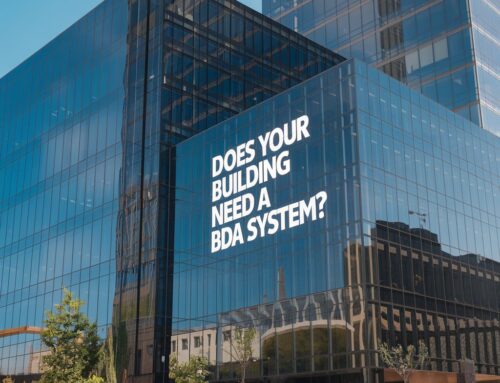Deploying an Emergency Responder Radio Communication System (ERRCS) is a big step in ensuring safety and compliance in your building. To make the process smoother, here are 13 essential tips to guide you:
- Start with a Comprehensive Site Survey
Think of the site survey as laying the groundwork. Identify areas with poor reception and map out coverage needs using tools like iBwave Design. This ensures nothing gets overlooked. - Know the Local Rules Inside and Out
Every jurisdiction has unique building and fire codes. Make sure your ERRCS meets local requirements, including those set by the AHJ (Authority Having Jurisdiction), to get the green light for your system. - Check for Frequency Interference
Run a spectrum analysis to spot any interference in the frequency bands your ERRCS will use. This step is critical to ensure clear and uninterrupted emergency communication. - Place Antennas Strategically
Where you put your antennas makes all the difference. Use advanced modeling tools like iBwave to find the perfect spots for donor and service antennas, maximizing coverage while keeping interference to a minimum. - Test Signal Strength and Quality
Make sure your signals are strong and reliable. Use metrics like RSSI and SINR to verify signal strength throughout the building, and adjust as needed to hit those sweet spots. - Plan Cable Routes Carefully
Cable routing can make or break your system’s performance. Use low-loss coaxial cables and proper grounding techniques to keep your signal clear and intact. - Design with Redundancy in Mind
Backup power and redundant signal paths are lifesavers in emergencies. Build your system with these in place to ensure it stays operational when it’s needed most. - Tackle Interference Early
Prevent external signals from messing with your system by using filters, isolators, and other interference mitigation strategies. - Test, Test, Test!
Before going live, thoroughly test your system. This includes acceptance testing, grid testing, and functional testing to make sure every component works as it should. - Keep Up with Maintenance
Regular maintenance is key to keeping your ERRCS compliant and functional. Schedule routine inspections, testing, and updates to stay ahead. - Stay Organized with Documentation
Keep detailed records, like iBwave design files, test results, and compliance documents. These will make future inspections and maintenance a breeze. - Train Your Team
Make sure building occupants and emergency responders know how to use the system. A quick training session on coverage areas and system use can make all the difference in an emergency. - Think Ahead with Future-Proofing
Design your system with tomorrow in mind. Plan for upgrades or expansions as technology and regulations evolve, so your system stays effective for years to come.
By following these tips, you can ensure your ERRCS is set up for success—keeping your building safe and connected when it matters most.
Would you like some help with your DAS system?


